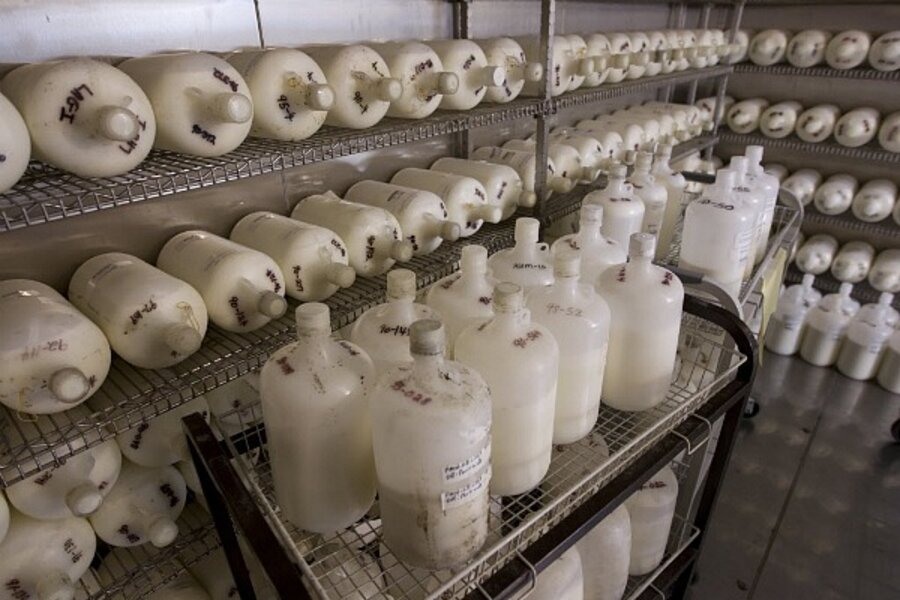Radioactive milk found on West Coast, but levels are 'minuscule'
Low levels of iodine-131 have been detected in radioactive milk samples from Spokane, Wash., and at a dairy in San Luis Obispo County, Calif. But the amounts are so low that they pose no health risk, report the Environmental Protection Agency and the US Food and Drug Administration.
Federal and state government scientists believe slight amounts of radioactive material from the Fukushima Daiichi nuclear reactors damaged in the recent earthquake and tsunami drifted over parts of North America, settling on grass and other feed crops eaten by milk cows.
But the amount of radioactive iodine-131 detected in milk is more than 5,000 times lower than what the FDA calls the “Derived Intervention Level” – the concentration of radionuclide activity adopted by the FDA to help determine whether domestically-produced food or food imported into the US presents a safety concern.
Japan Fukushima nuclear crisis: A timeline of key events
“These types of findings are to be expected in the coming days and are far below levels of public health concern, including for infants and children,” the EPA and the FDA said in a joint statement Wednesday. “Iodine-131 has a very short half-life of approximately eight days, and the level detected in milk and milk products is therefore expected to drop relatively quickly.”
State officials agree: no health risk
Officials in Washington State and California agree that there is no health risk in drinking milk produced on the West Coast
"This morning I spoke with the chief advisers for both the EPA and the FDA and they confirmed that these levels are minuscule and are far below levels of public health concern, including for infants and children," Washington Gov. Chris Gregoire said in a statement Wednesday.
“According to them, a pint of milk at these levels would expose an individual to less radiation than would a five-hour airplane flight,” Gov. Gregoire said. “Since the situation in Japan we have been monitoring for radiation. We will continue our monitoring and work closely with the EPA, FDA and CDC [Centers for Disease Control and Prevention]. At no point have detection levels come close to levels of concern.”
The California Department of Public Health issued similar reassurances.
"Tests from eight environmental monitoring stations in California have found trace levels of radiation that do not present a risk to human health," the department said.
Sensors have detected iodine-131 in Colorado and some East Coast states as well. But there too, officials report no threat to human health.
Imports of dairy products and produce from Japan have been halted. Other imported foods, including seafood, are still being sold in the United States but only after being screened for radiation.
EPA increases monitoring
The EPA this week said it is increasing its monitoring of milk, precipitation and drinking water around the country.
The Union of Concerned Scientists, which generally opposes nuclear energy and has been critical of the Nuclear Regulatory Commission (NRC), says there is little threat to Americans from drifting radioactive materials.
“While wind patterns will likely carry the radioactive plume eastward, since Japan is thousands of miles from the United States, radioactive material in the air will be so diffuse by the time it reaches Hawaii, Alaska, or the mainland United States that it is highly unlikely to create significant health concerns,” the UCS says in its Website FAQs. “As a result, people in those locations will not have to worry about direct inhalation of a radiation plume."
Scientists emphasize that safe levels of radiation are found in many places.
"Radiation is all around us in our daily lives, and these findings are a minuscule amount compared to what people experience every day,” said Patricia Hansen, an FDA senior scientist. “For example, a person would be exposed to low levels of radiation on a round-trip cross-country flight, watching television, and even from construction materials."





